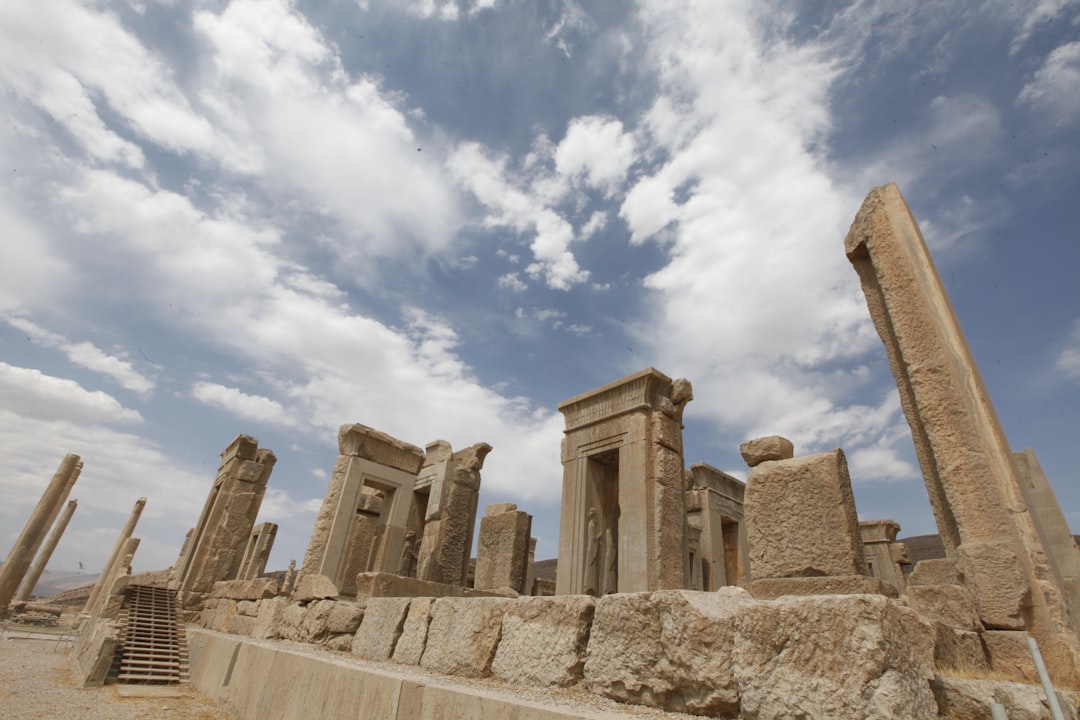The Islamic Golden Age, which spanned from the 8th to the 14th century, was a period of extraordinary intellectual, cultural, and scientific achievements. While it was a time of tremendous growth for the Islamic world as a whole, Persia (modern-day Iran) played an indispensable role in this intellectual renaissance. Persian scholars, scientists, and philosophers were at the forefront of some of the most significant advancements in science, mathematics, and philosophy, shaping the development of the medieval world and laying the foundations for the Renaissance in Europe.
In this blog post, we will explore the profound contributions of Persian scholars to the Islamic Golden Age, highlighting their achievements and the lasting legacy of Persian intellect in shaping the world we know today.
🌟 The Islamic Golden Age and Persia's Role
The Islamic Golden Age began after the Arab Caliphates expanded across vast regions of the Middle East, North Africa, and beyond. The period was marked by the fusion of knowledge from ancient cultures—Greek, Persian, Indian, and others—into the Islamic world. It was a time when scholars in the Islamic empire, including Persia, preserved and built upon the works of previous civilizations, pushing the boundaries of human understanding in various fields.
Persia, which had long been a center of ancient civilization, became a vital part of this cultural and intellectual transformation. Persian scholars not only preserved the knowledge of the Achaemenid and Sassanian empires but also contributed original ideas and discoveries that would shape the trajectory of scientific and philosophical thought.
🔬 Persian Contributions to Science
Persian scholars made significant advancements in a wide range of scientific disciplines, including astronomy, medicine, chemistry, botany, and engineering.
Astronomy: Charting the Cosmos
Persian astronomers played a crucial role in the study of the stars, planets, and the heavens. They were instrumental in translating and preserving Greek astronomical works and expanding upon them. One of the most notable Persian astronomers of the Islamic Golden Age was Al-Battani (c. 858–929), whose astronomical tables corrected earlier Greek models and became a standard reference in both the Islamic world and medieval Europe.
Another key figure was Omar Khayyam (1048–1131), who was not only a renowned poet but also an accomplished astronomer. Khayyam helped reform the Persian calendar, creating a system that was more accurate than the Gregorian calendar used in Europe at the time. His work in astronomy and mathematics, particularly his contributions to algebra, laid the groundwork for future scientific discoveries.
Medicine: The Healing Arts
Persian scholars made revolutionary contributions to the field of medicine, particularly in the areas of anatomy, surgery, and pharmacology. One of the most influential figures in Islamic medicine was Avicenna (Ibn Sina, 980–1037), whose medical encyclopedia, the Canon of Medicine, became the standard textbook in both the Islamic world and Europe for centuries.
Avicenna’s work covered a wide range of medical topics, including the treatment of diseases, the use of medicinal plants, and the understanding of the human body. His theories on contagious diseases, including the spread of infections, were far ahead of his time.
Another notable figure was Al-Razi (865–925), known in the West as Rhazes. He is famous for his work in pediatrics, ophthalmology, and dermatology, as well as for his encyclopedic medical knowledge. Al-Razi is often credited with pioneering the concept of clinical medicine, emphasizing the importance of observation and diagnosis in treatment.
➗ Mathematics: The Foundation of Modern Calculation
Persia's contributions to mathematics during the Islamic Golden Age were groundbreaking, particularly in the fields of algebra, geometry, and trigonometry.
Algebra: The Birth of a New Field
The Persian mathematician Al-Khwarizmi (c. 780–850) is often considered the "father of algebra." His seminal work, the Al-Kitab al-Mukhtasar fi Hisab al-Jabr wal-Muqabala (The Compendious Book on Calculation by Completion and Balancing), introduced systematic methods for solving linear and quadratic equations. The term “algebra” itself comes from the Arabic word al-jabr, which means "completion" or "rejoining."
Al-Khwarizmi’s methods were revolutionary and laid the foundation for modern algebraic theory. His influence extended well beyond the Islamic world, as his work was translated into Latin in the 12th century and had a profound impact on the development of European mathematics.
Trigonometry: Advancing the Study of Angles
Persian scholars were also instrumental in the development of trigonometry, a field that is fundamental to the study of angles and the measurement of triangles. Nasir al-Din al-Tusi (1201–1274), one of the leading Persian astronomers and mathematicians of the medieval period, contributed extensively to trigonometry, developing the Tusi-couple, a geometric method used in astronomy and spherical geometry.
Al-Tusi's work provided key advancements in understanding the motion of the planets and contributed to the development of the solar system models that would later influence Copernicus. His contributions to mathematics and astronomy are considered some of the most important in Islamic scientific history.
🧠 Philosophy: The Intellectual Legacy of Persia
Persian philosophers played a central role in preserving and expanding upon the philosophical traditions of ancient Greece, particularly those of Aristotle and Plato. They integrated Greek philosophy with Islamic thought and made significant contributions to ethics, metaphysics, and epistemology.
Avicenna: The Philosopher and Scientist
In addition to his medical achievements, Avicenna was also one of the most influential philosophers in the Islamic world. His works on metaphysics and epistemology provided a synthesis of Aristotelian logic and Neoplatonic philosophy, combined with Islamic theology.
Avicenna’s "Book of Healing" (Kitab al-Shifa) and his "Canon of Medicine" are both considered monumental texts that shaped both medieval philosophy and science. His views on the soul, the nature of existence, and the relationship between God and the universe have had a lasting impact on Islamic and Western philosophy.
Rumi: The Mystical Philosopher
While Rumi (1207–1273) is primarily known for his poetry, he was also a profound philosopher and mystic. His works explore deep questions of existence, the nature of the soul, and the divine. Rumi’s philosophy, deeply rooted in Sufism, emphasizes love, unity, and the importance of spiritual enlightenment.
Rumi’s contributions to Islamic thought are significant because his mystical approach to philosophy helped bridge the gap between human reason and divine revelation. His works continue to inspire not only spiritual seekers but also philosophers and thinkers around the world.
✨ Conclusion: Persia’s Lasting Influence
The contributions of Persian scholars to the Islamic Golden Age are a testament to the intellectual power and creativity of the region. From mathematics and astronomy to medicine and philosophy, Persian scholars played a critical role in preserving and expanding upon the knowledge of earlier civilizations while simultaneously shaping the course of future discoveries.
Their legacy lives on today, not only in the scientific principles and philosophical ideas that have become integral to modern thought but also in the cultural richness of the Persian intellectual tradition. The achievements of Persia during the Islamic Golden Age are a powerful reminder of the enduring importance of knowledge, learning, and the exchange of ideas in the development of human civilization.
Through their work, Persian scholars made an indelible mark on history, and their contributions continue to resonate in the fields of science, mathematics, and philosophy to this day.





